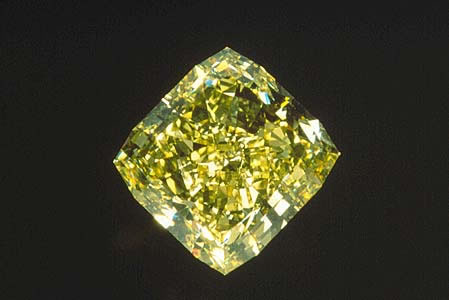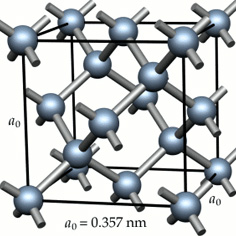《説文解字》:壬,位北方也。陰極陽生 ,故《易》曰:“龍戰于野。”戰者,接也 。象人褢妊之形。承亥壬以子,生之敘也 。與巫同意。壬承辛,象人脛。脛,任體也 。凡壬之屬皆从壬。
本義:善於使用巧具,勝任事務。
《論語》‧泰伯第八
曾子曰:士不可以不弘毅,任重而道遠,仁以為己任,不亦重乎!死而後已,不亦遠乎!
曾子曰:以能問於不能,以多問於寡;有若無,實若虛,犯而不校;昔者吾友【顏淵】,嘗從事於斯矣。
假使不知道『仁』的『當量』,要如何計算『一輩子』為己任,能有多『重』呢?又不知道是否以『天下』為己任,『一生』又將走多『遠』的呢??然而這卻不礙『會意』,即使以待『一人之仁』之『重』對當於『那人體重』來算,想來大概也心中有數的了!
宋代釋贊寧《宋高僧傳》中記載李渤任江州刺史時曾與白居易一起去拜訪過智常禪師:李問曰:『教中有言,須彌納芥子芥子納須彌,如何芥子納得須彌?』常曰: 『人言博士學覽萬卷書籍還是否耶?』李曰:『忝此虛名。』常曰:『摩踵至頂只若干尺身,萬卷書向何處著?』李俯首無言。再思稱嘆。
就像老子所講的︰『虛其心,實其腹。』,正是顏淵學習之態度︰『有若無,實若虛』,豈非『芥子』之『心』可納『須彌』 的耶 !妙哉,大自然 在 1 公克 DNA 中可以儲存 360 EB 的信息量!!據聞物理學『弦論』中的『全像原理』 Holographic principle 述說著人類目前尚未理解的奧秘︰
全像原理認為目前所見的宇宙是真實宇宙的投影。以較宏觀的觀點來看,此原理指出了整個宇宙可視為一個呈現在宇宙學視界上的二維資訊結構,而日常觀察到的三維空間則是巨觀尺度且低能量的有效描述。值得注意的是,宇宙學全像原理在數學上仍未達精確。
,果真是宇宙人生現象之『大數據』 Big data 的哩!!
── 摘自《《派生》 Python 作坊【壬】任重道遠》
這個『全像原理』是說人類祇不過活在『立體投射』之『體驗』的世界嗎?就像《金剛經》所言︰
凡所有相,皆是虛妄!
就讓我們用 Lambda Calculator 之『純 λ 運算』,寫個『孤虛』NAND 邏輯,推算到底『牛郎織女』是『相會的成』還是『相會不成』的呢??
下面是『孤虛語』的『字典定義』︰
且 [\p. \q. p q 假] = \p.\q.p q 假
假 [\x. \y. y] = \x.\y.y
孤虛 [\u. \v. 非 ( 且 u v )] = \u.\v.u v 假 假 真
或 [\p. \q. p 真 q] = \p.\q.p 真 q
有數 [\f. \x. (f x)] = \f.\x.f x
沒嗎? [\n. n (\x. 假) 真] = \n.n (\x.假) 真
真 [\x. \y. x] = \x.\y.x
若則否則 [\p. \x. \y. p x y] = \p.\x.\y.p x y
非 [\p. p 假 真] = \p.p 假 真
已知『且 (孤虛 假 假) (孤虛 真 真) 』為『假』,那麼
『 若則否則 (且 (孤虛 假 (非 假) ) (孤虛 真 (非 真) )) (沒嗎? 假) (沒嗎? 有數) 』是『成』還是『不成』的呢??
《金剛經》
佛告須菩提,凡所有相,皆是虛妄,若見諸相非相,則見如來。
也許『不變的愛』 ( λ 之. (不變的愛 之)) 只能是一個『行為的純函式』,她不製造任何的『副作用』。對於『之人』『之物』的『初衷』不變,次次回回保有『愛之初心』,不會生此一時,彼一地的『妄念 』,或可至之於『終身』,方可許諾能『永恆』!!
── 摘自《λ 運算︰概念導引之《補充》※真假祇是個選擇??》
因是如人飲水之事,飲者自知其情,他人如何置喙!!
何妨先觀那個『立體投射』之法乎??
全像術
全像術(英語:Holography),又稱全像投影、全像3D,是一種記錄被攝物體反射(或透射)光波中全部信息(振幅、相位)的照相技術,而物體反射或者透射的光線可以通過記錄膠片完全重建,仿佛物體就在那裡一樣。通過不同的方位和角度觀察照片,可以看到被拍攝的物體的不同的角度,因此記錄得到的像可以使人產生立體視覺。
全像術歷史與概述
1947年,英國匈牙利裔物理學家[1]丹尼斯·蓋伯[2]發明了全像術,他因此項工作獲得了1971年的諾貝爾物理學獎。其它的一些科學家在此之前也曾做過一些研究工作,解決了一些技術上的的問題。全像術的發明是蓋伯在英國BTH公司研究增強電子顯微鏡性能手段時的偶然發現,而這項技術由該公司在1947年12月申請了專利(專利號GB685286)。這項技術從發明開始就一直應用於電子顯微技術中,在這個領域中被稱為電子全像術技術,但是全像術一直到1960年雷射的發明才取得了實質性的發展。
第一張實際記錄了三維物體的光學全像術照片是在1962年由蘇聯科學家尤里·丹尼蘇克拍攝的[3]。 與此同時,美國密西根大學雷達實驗室的工作人員艾米特·利思和尤里斯·烏帕特尼克斯也發明了同樣的技術[4]。 尼古拉斯·菲利普斯改進了光化學加工技術,以生產高質量的全像術圖片[5]。
全像術可以分為如下若干類。透射全像術,如利思和烏帕特尼克斯所發明的技術,這種技術通過向全像術膠片照射雷射,然後從另一個方向來觀察重建的圖像。後來經過改進,彩虹全像術可 以使用白色光來照明,以觀察重建的圖像。彩虹全像術現在廣泛的應用於諸如信用卡安全防偽和產品包裝等領域。這些種類的彩虹全像術通常在一個塑料膠片形成了 表面浮雕圖案,然後通過在背面鍍上鋁膜使光線透過膠片以重建圖像。另一種常見的全像術稱為反射全像術,或稱為丹尼蘇克全像術。這種技術可以通過使用白色光 源從和觀察者相同的方向來照射膠片,通過反射來重建彩色的圖像,以重建圖像。鏡面全像術[6]是一種通過控制鏡面在二維表面上的運動來製造三維圖像的相關技術。它通過控制反射光線或者折射光線來構造全像圖像,而蓋伯的全像術是通過繞射光來重建波前的。
促使全像術在短短的一段時間內就蓬勃發展的關鍵原因是低成本的固體雷射器的大規模生產,如DVD播放機和 其他的一些常用設備中所使用的雷射器。這些雷射器對全像術的發展也產生了極大的促進作用。這些廉價的體積又很小的固體雷射器可以在某些條件下與最初用於全 像術的那些大型的昂貴的氣體雷射器相媲美,因此使得預算較低的研究者、藝術家甚至業餘愛好者都可以參與到全像術的研究中來。
Holography
Holography is the science and practice of making holograms. Typically, a hologram is a photographic recording of a light field, rather than of an image formed by a lens, and it is used to display a fully three-dimensional image of the holographed subject, which is seen without the aid of special glasses or other intermediate optics. The hologram itself is not an image and it is usually unintelligible when viewed under diffuse ambient light. It is an encoding of the light field as an interference pattern of seemingly random variations in the opacity, density, or surface profile of the photographic medium. When suitably lit, the interference pattern diffracts the light into a reproduction of the original light field and the objects that were in it appear to still be there, exhibiting visual depth cues such as parallax and perspective that change realistically with any change in the relative position of the observer.
In its pure form, holography requires the use of laser light for illuminating the subject and for viewing the finished hologram. In a side-by-side comparison under optimal conditions, a holographic image is visually indistinguishable from the actual subject, if the hologram and the subject are lit just as they were at the time of recording. A microscopic level of detail throughout the recorded volume of space can be reproduced. In common practice, however, major image quality compromises are made to eliminate the need for laser illumination when viewing the hologram, and sometimes, to the extent possible, also when making it. Holographic portraiture often resorts to a non-holographic intermediate imaging procedure, to avoid the hazardous high-powered pulsed lasers otherwise needed to optically “freeze” living subjects as perfectly as the extremely motion-intolerant holographic recording process requires. Holograms can now also be entirely computer-generated and show objects or scenes that never existed.
Holography should not be confused with lenticular and other earlier autostereoscopic 3D display technologies, which can produce superficially similar results but are based on conventional lens imaging. Stage illusions such as Pepper’s Ghost and other unusual, baffling, or seemingly magical images are also often incorrectly called holograms.

Two photographs of a single hologram taken from different viewpoints

Close-up photograph of a hologram’s surface. The object in the hologram is a toy van. It is no more possible to discern the subject of a hologram from this pattern than it is to identify what music has been recorded by looking at a CD surface. Note that the hologram is described by the speckle pattern, rather than the “wavy” line pattern.

Recording a hologram

Reconstructing a hologram
Mathematical model
A single-frequency light wave can be modeled by a complex number U, which represents the electric or magnetic field of the light wave. The amplitude and phase of the light are represented by the absolute value and angle of the complex number. The object and reference waves at any point in the holographic system are given by UO and UR. The combined beam is given by UO + UR. The energy of the combined beams is proportional to the square of magnitude of the combined waves as:
If a photographic plate is exposed to the two beams and then developed, its transmittance, T, is proportional to the light energy that was incident on the plate and is given by
where k is a constant.
When the developed plate is illuminated by the reference beam, the light transmitted through the plate, UH is equal to the transmittance T multiplied by the reference beam amplitude UR, giving
It can be seen that UH has four terms, each representing a light beam emerging from the hologram. The first of these is proportional to UO. This is the reconstructed object beam which enables a viewer to ‘see’ the original object even when it is no longer present in the field of view.
The second and third beams are modified versions of the reference beam. The fourth term is known as the “conjugate object beam”. It has the reverse curvature to the object beam itself and forms a real image of the object in the space beyond the holographic plate.
When the reference and object beams are incident on the holographic recording medium at significantly different angles, the virtual, real and reference wavefronts all emerge at different angles, enabling the reconstructed object to be seen clearly.
待得日後能身體力行時再論耶◎
Researchers demonstrate the world’s first white lasers
July 29, 2015 by Sharon Keeler





